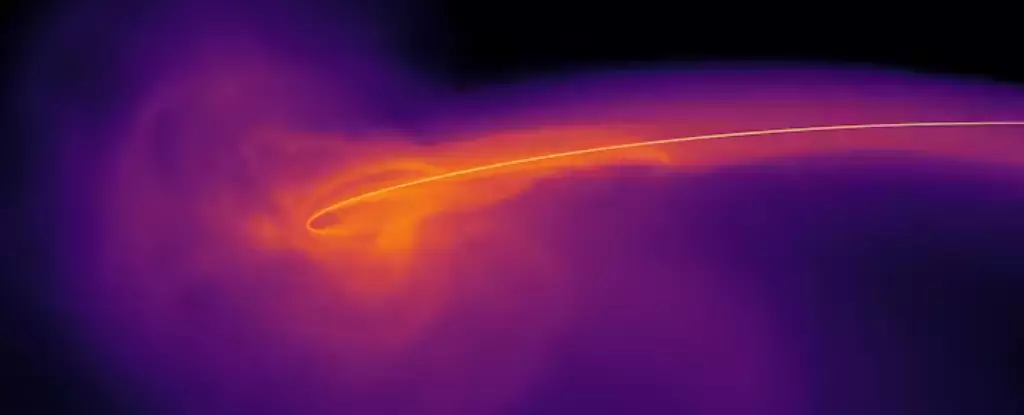The discovery of tidal disruption events (TDEs) where giant black holes in the centers of galaxies devour nearby stars has sparked fascination and intrigue in the field of astronomy. This process involves the star being spaghettified and torn to shreds as it approaches the supermassive black hole, resulting in a spectacular display known as a TDE. Recent advancements in simulations have allowed scientists to delve deeper into the intricacies of this phenomenon.
Theoretical predictions by astronomers Jack G. Hills and Martin Rees in the 1970s and 80s envisioned a scenario where half of the star’s debris would form an accretion disc around the black hole, emitting copious amounts of X-rays. However, the reality has proven to be quite different. Observations of more than 100 TDEs have shown that the glowing material mainly emits visible light rather than X-rays, with temperatures comparable to that of a warm star’s surface.
Recent simulations have shed light on the discrepancies between theoretical predictions and observational findings. The simulations depict the star’s spaghettification process near the black hole, with only 1% of the shredded material being consumed. The remaining debris forms a rapidly expanding cloud around the black hole, suggesting a mechanism through which the black hole is smothered by material during the disruption.
Due to the extreme conditions near supermassive black holes, simulations of TDEs require the inclusion of effects from Einstein’s general theory of relativity. These effects, which deviate from Newton’s laws of gravity, play a crucial role in accurately modeling the behaviors observed during a TDE. PhD student David Liptai’s innovative simulation method paved the way for a comprehensive exploration of these events.
The cutting-edge simulations showcase the entire process of a TDE, from the initial plunge of the star to the eventual expulsion of debris away from the black hole. The simulations reveal that the material falling towards the black hole generates immense heat, powering a spherical outflow reminiscent of a cosmic “burp”. This outflow is a key factor in understanding the observed phenomena surrounding TDEs.
The new simulations offer a fresh perspective on the dynamics of TDEs and the behavior of giant black holes when interacting with nearby stars. The smothering effect observed in the simulations provides a plausible explanation for the lack of X-ray emissions and the expansion of glowing material around the black hole. By bridging the gap between theoretical predictions and observational data, these simulations have deepened our understanding of TDEs and the role of black holes in shaping the cosmos.
The simulations of TDEs represent a significant leap forward in unraveling the mysteries of these cosmic events. By incorporating the complexities of general relativity and pushing the boundaries of computational modeling, scientists have provided valuable insights into the behavior of giant black holes and their interactions with surrounding stars. The unprecedented level of detail offered by these simulations opens up new avenues for further exploration and discovery in the field of astrophysics.


Leave a Reply